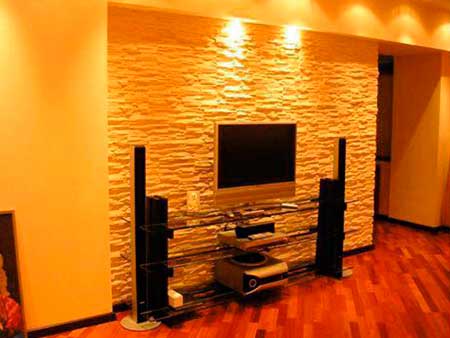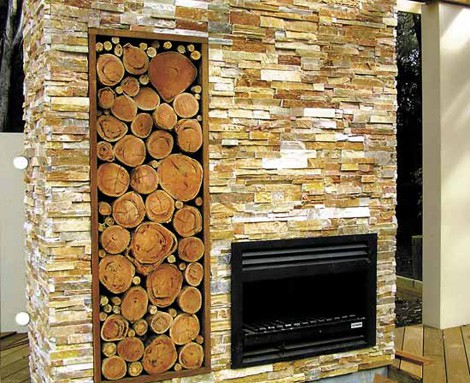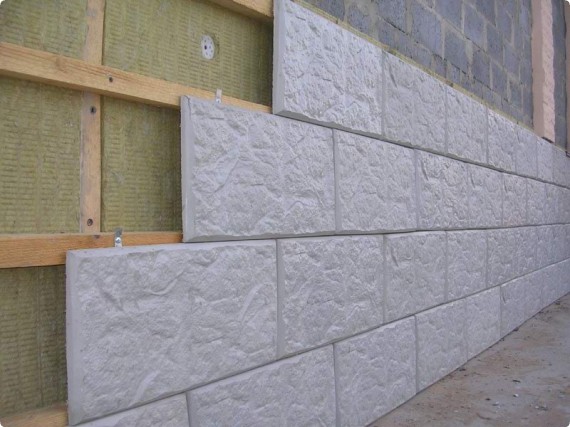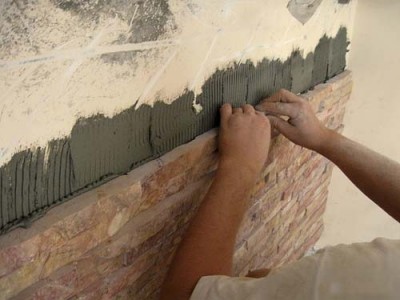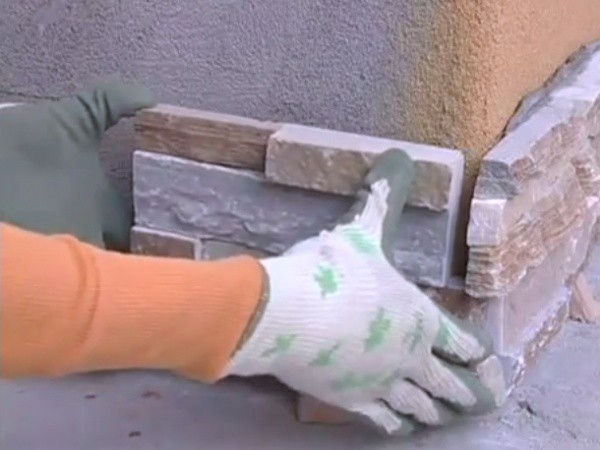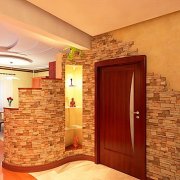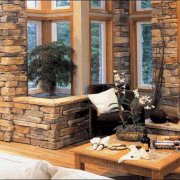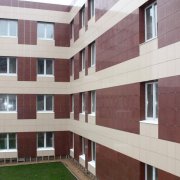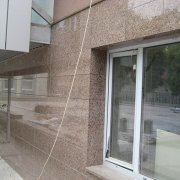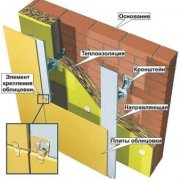Decorative stone cladding: design options
At the moment, facing with decorative stone can be performed both indoors and outdoors. To do this, there is a large assortment of material that is of natural and artificial origin.
The content of the article
Types of stones for decoration and methods of their use
The most common types stone finishes Along with numerous imitations of the material are natural and decorative stone. They are very similar in their appearance, but they can also have distinctive properties, characteristics, and quality indicators.
Natural stone in decorating
Natural stone It has been used in construction and decoration for many years. Decorative stone facing of this type is considered very rich and original.
Only here it is worth considering the fact that although the material is environmentally friendly, still some rocks of the agglomerates are able to emit toxins and radiation.
Tip. Before choosing a material for decorating a room, you should initially ask the seller about radiation and the harmfulness of stone, so that over time there are no health problems.
Characteristics:
- The price of such a finishing material is in some cases very high, which makes it impossible to use it in certain works. It is a universal finish, which is performed both inside and outside the room.
- Natural stone runs the surface of the walls. You can make yourself just a decor of facing stone, which will be in the form of a wall canvas.
Tip. Before such actions, it is necessary to initially assess the weight of the stone, since not every canvas on which the natural agglomerate will be mounted is able to withstand heavy loads.
All this is due to the fact that in most cases natural stone has a very large mass and preparatory work on strengthening is carried out for its installation on the surface.
Natural Stone Finishing Properties
Decorative stone cladding has its own advantages.
It:
- Very practical as it does not absorb dirt, dust and moisture.
- Long-life - not able to deform under the influence of weather and climatic conditions and retains its appearance for a very long time.
- Environmentally friendly, but this indicator does not apply to all natural agglomerates that are used in decoration.
- It is frost-resistant, which makes it possible to apply it even in those regions that experience severe frosts and very sharp temperature drops in winter.
- Wear-resistant - due to the fact that the surface of a stone of natural origin is able to withstand significant loads, and it is resistant to impacts even at home.
- It has in most cases easy installation. It all depends on the size and weight of the stone used in the decoration.
Note. Decorative natural facing stones today have a wide variety of shapes and breeds.
They can be used both for laying a separate wall and for its decoration. In the latter embodiment, layers of natural stone are used.
Wild stone lining has become very popular recently.
It is performed using:
- Slate.
- Sandstone.
- Shellfish and other species.
Also very often used:
- Granite.
- Marble.
- Onyx.
- Turquoise and so on.
With their use, decorative stone cladding will look very original.
Installation of natural stone
All actions are not particularly difficult, and you can do them yourself, you only first need to get expert advice in this area and determine what type of natural material and what form will be used in decoration.
The type of finishing work also plays a large role, since different tools and materials can be used in the interior and exterior decoration. It all depends on the breed and weight natural stone.
Work order:
- Installation instructions for such a material do not exist, but there are certain recommendations according to which the surface is reinforced before the material is installed, since in most cases the natural agglomerate has a large weight.
Tip. Such work is carried out only if layers of natural stone are used.
- If de in the decoration used whole breeds of different sizes, then they are laid.
All actions in this case will be similar to bricklaying and for this you need:
- Cement mortar - preferably without sand admixtures. Hardener and sealant are added to it.
It is prepared only from water and cement grade 400 in a concrete mixer, which ensures uniform distribution of mass and speeds up the process of preparing the composition. You can use a special container. - The construction level by which deviations from the wall plane will be measured. If the natural stone lies on the floor, then you can use the chalk level.
- Wizards of a certain size (which will be very convenient to work with), you can watch the training video.
- Strengthening the surface for the installation of natural agglomerate is carried out using a special reinforcing mesh, which is mounted on a solution of cement or plaster in the process of leveling the surface.
Tip. The choice of one or another means (cement mortar or plaster) depends on the weight and size of the material.
The installation of natural stone plates is carried out similarly to the laying process ceramic tiles.
Decorative stone in decorating
Meets as an inner lining decorative stoneboth external. This type of finishing material is universal due to its characteristics and excellent properties.
Decorative facing stone:
- It has an attractive appearance and its surface is an imitation of natural stone.
- Practical, as it is easy to clean even without the use of special detergents.
- Long-lasting, since facing the house with decorative stone can be used for 10-15 years.
- Moisture-resistant, as it does not absorb moisture and dirt and is able to withstand very high humidity.
- It does not deform under significant temperature changes and does not even change its structure.
- It is characterized by very easy installation due to its low weight. This means that facing the walls with decorative stone will not create additional loads on the foundation in case of finishing work outside the building.
- Frost-resistant, as it can withstand very low temperature conditions.
- Wear-resistant due to the fact that the surface of the material has a reliable protective layer, which prevents the shade or decoration of the artificial stone from deteriorating.
- Off - for a long time freely withstands exposure to a direct source of fire.
Features:
- Cladding the walls of the apartment with decorative stone will cost several times cheaper than decorating using natural agglomerate.
- The lining of the apartment with decorative stone combines very well with decorative plaster, which, like the decoration material itself, has a wide variety of shades and designs (with thread inserts, crumbs of natural agglomerate, and so on).
- The surface of the artificial stone can be embossed, smooth or torn, matte or glossy. And the back is perfectly flat.
Tip. Facing walls made of decorative stone should be done only on a well-prepared surface: even and cleaned.
Surface preparation for the installation of decorative stone
Decorative facing stones can be mounted on any surface that will be flat. Drywall is used to level it, which is a very strong and reliable material.
The latter method has been known to all for many years. It is distinguished by its duration and complexity.
It uses several types of plaster:
- "Start".
- "The finish".
Stages:
- They have different structures and properties.
The first is used directly on the surface itself, and the second is the final step in leveling the surface. Be sure to each layer of this tool should be processed with sandpaper. - It is possible to mount facing decorative stones on such a surface without much difficulty, since the plaster has excellent adhesion to any special glue or cement mortar.
- Using drywall has its advantages. The process is very fast and not too laborious.
The material is mounted on a metal frame from a special profile, which is mounted directly on the surface itself.
Tip. To be able to easily mount decorative stone for wall cladding on a drywall surface, it must be primed to ensure high-quality and reliable adhesion of the cement or glue solution.
Mounting decorative stone
Facing decorative stone for interior decoration is attached to the surface with:
- A cement mortar, which is prepared independently in a specific container and mixed with a construction mixer or adhesive solution, which is sold in bulk form and for its preparation it is enough to add water in the specified amount.
- Spatula with thread at the end for applying mortars.
- Building level for a smooth finish.
- Decorative putty (if necessary).
Since a decorative stone for cladding in a house can have large dimensions, it is most rational to use a solution of concrete, which will reliably fix the finish to the surface.
